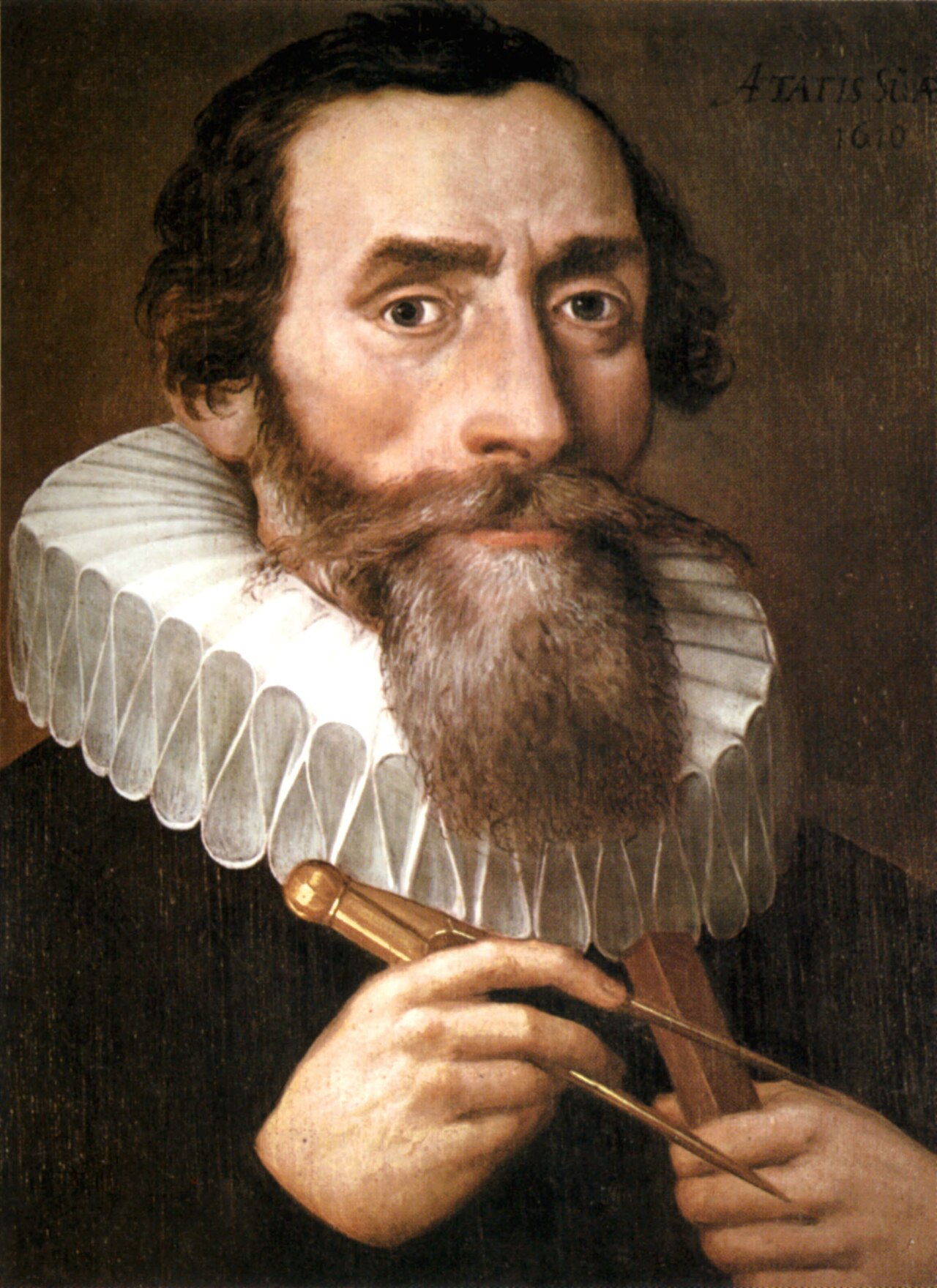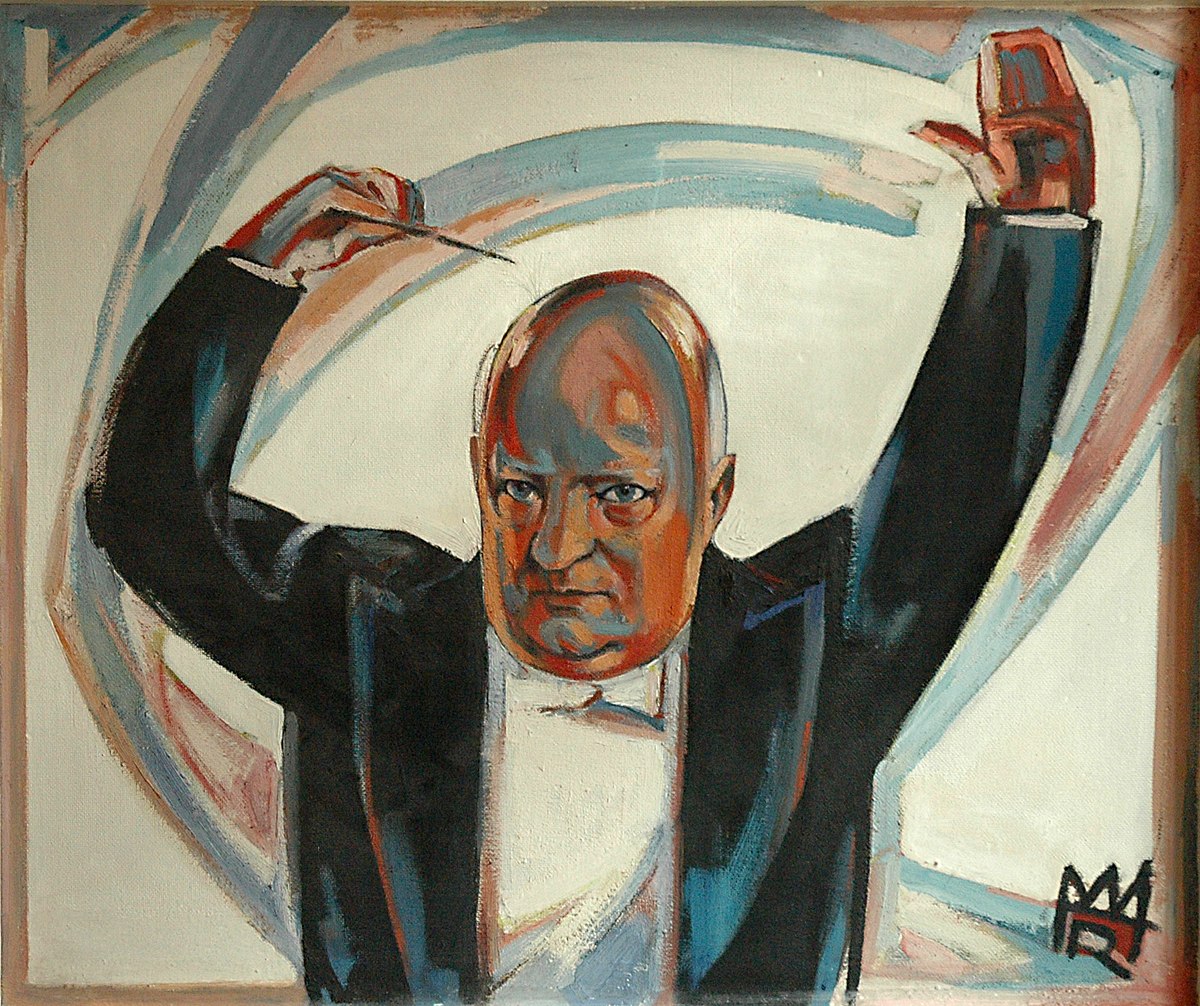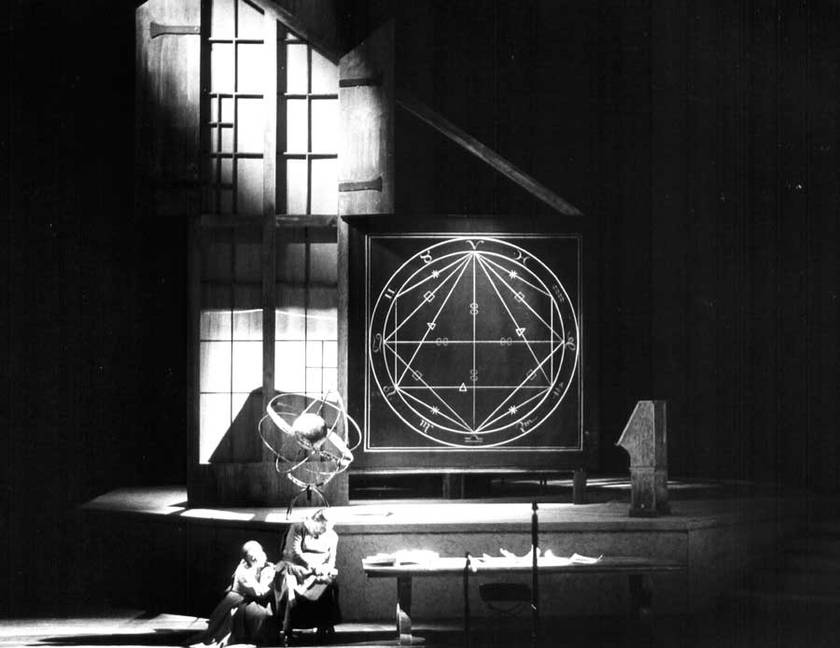The German astronomer and mathematician Johannes Kepler (1571-1630) wrote a book titled Harmonice Mundi (The Harmony of the World) in 1619. He had been working on the book for roughly 20 years, establishing celestial-harmonic relationships. He also abandoned the Pythagorean system of tuning for musical consonance—based on the interval of a fifth—and instead related musical consonance to the angular velocities of the planets.

Johannes Kepler
Paul Hindemith: Die Harmonie der Welt – Act 1 “Prelude” (Arutjun Kotchinian, bass; François Le Roux, baritone; Robert Wörle, tenor; Christian Elsner, tenor; Michael Burt, bass-baritone; Reinhard Hagen, bass; Michael Kraus, baritone; Daniel Kirch, tenor; Sophia Larson, soprano; Michelle Breedt, mezzo-soprano; Tatjana Korovina, soprano; Egbert Junghanns, baritone; Andreas Kohn, bass-baritone; Berlin Radio Symphony Chorus; Berlin Radio Symphony Orchestra; Marek Janowski, cond.)
Kepler was a seminal figure in the 17th-century Scientific Revolution, still known for his laws of planetary motion, and his work greatly influenced Isaac Newton and his theory of universal gravitation. Kepler’s theories were not immediately popular or accepted, and Galileo and René Descartes completely ignored his writings. In fact, for his obsession with the harmony of the spheres, he was eventually excommunicated from the Lutheran Church.
For Kepler, “geometrical things have provided the Creator with the model for decorating the whole world.” And in his “Harmony of the World,” he transferred the proportions of the natural world in terms of music. Paul Hindemith wrote an opera about Kepler entitled “Die Harmonie der Welt,” and he also composed a symphony of the same name.
Paul Hindemith: Die Harmonie der Welt – Act I Scene 1: Street in Prague: Leute, her und krauft euch mein Blatt (Arutjun Kotchinian, bass; François Le Roux, baritone; Robert Wörle, tenor; Christian Elsner, tenor; Michael Burt, bass-baritone; Reinhard Hagen, bass; Michael Kraus, baritone; Daniel Kirch, tenor; Sophia Larson, soprano; Michelle Breedt, mezzo-soprano; Tatjana Korovina, soprano; Egbert Junghanns, baritone; Andreas Kohn, bass-baritone; Berlin Radio Symphony Chorus; Berlin Radio Symphony Orchestra; Marek Janowski, cond.)
Paul Hindemith: Die Harmonie der Welt – Act I Scene 3: Wenn die Scheinwelt meiners (Arutjun Kotchinian, bass; François Le Roux, baritone; Robert Wörle, tenor; Christian Elsner, tenor; Michael Burt, bass-baritone; Reinhard Hagen, bass; Michael Kraus, baritone; Daniel Kirch, tenor; Sophia Larson, soprano; Michelle Breedt, mezzo-soprano; Tatjana Korovina, soprano; Egbert Junghanns, baritone; Andreas Kohn, bass-baritone; Berlin Radio Symphony Chorus; Berlin Radio Symphony Orchestra; Marek Janowski, cond.)

Rudolf Wilhelm Heinisch: Paul Hindemith
Hindemith’s opera, based on his own libretto, premiered in Munich on 11 August 1957. The plot is based on the life of Johannes Kepler and is set against the background of the Thirty Years War. In a number of scenes, the astronomer searches for universal harmony derived from his book The Harmony of the World.
Kepler (baritone) meets with the emperors Rudolf II and Ferdinand II (combined role, bass) and the warlord Wallenstein (tenor), for all of whom he worked. He also interacts with the astrologer Tansur (bass), Hizler, the priest who denied him holy communion (bass), and his skeptical pupil Grüsser (tenor), eventually one of Wallenstein’s assassins.
Paul Hindemith: Die Harmonie der Welt – Act II: March (Arutjun Kotchinian, bass; François Le Roux, baritone; Robert Wörle, tenor; Christian Elsner, tenor; Michael Burt, bass-baritone; Reinhard Hagen, bass; Michael Kraus, baritone; Daniel Kirch, tenor; Sophia Larson, soprano; Michelle Breedt, mezzo-soprano; Tatjana Korovina, soprano; Egbert Junghanns, baritone; Andreas Kohn, bass-baritone; Berlin Radio Symphony Chorus; Berlin Radio Symphony Orchestra; Marek Janowski, cond.)
Other important characters include his superstitious mother, Katharina (contralto), his second wife, Susanna (soprano), and young Susanna, his daughter (soprano). On his deathbed, Kepler realizes that his efforts have been in vain. “The great harmony is death. To effect it, we must die. In life, harmony has no place.”
That’s all a bit dark, so Hindemith concludes his opera with an extended visionary scene in which the main characters reappear as the planets they embodied in their life on Earth. The emperors (Sun), Kepler (Earth), Wallenstein (Jupiter), Grüsser (Mars), Hizler (Mercury), Tansur (Saturn), Susanna (Venus), Katharina (Moon) and finally the chorus as the Milky Way.
Paul Hindemith: Die Harmonie der Welt – Act III Scene 1: Mannlein im Mond. Du bis so fahl (Arutjun Kotchinian, bass; François Le Roux, baritone; Robert Wörle, tenor; Christian Elsner, tenor; Michael Burt, bass-baritone; Reinhard Hagen, bass; Michael Kraus, baritone; Daniel Kirch, tenor; Sophia Larson, soprano; Michelle Breedt, mezzo-soprano; Tatjana Korovina, soprano; Egbert Junghanns, baritone; Andreas Kohn, bass-baritone; Berlin Radio Symphony Chorus; Berlin Radio Symphony Orchestra; Marek Janowski, cond.)
Paul Hindemith: Die Harmonie der Welt – Act III Scene 2: Prozess gegen die Keplerin (Arutjun Kotchinian, bass; François Le Roux, baritone; Robert Wörle, tenor; Christian Elsner, tenor; Michael Burt, bass-baritone; Reinhard Hagen, bass; Michael Kraus, baritone; Daniel Kirch, tenor; Sophia Larson, soprano; Michelle Breedt, mezzo-soprano; Tatjana Korovina, soprano; Egbert Junghanns, baritone; Andreas Kohn, bass-baritone; Berlin Radio Symphony Chorus; Berlin Radio Symphony Orchestra; Marek Janowski, cond.)

Paul Hindemith: The Harmony of the World
They proclaim that the planets themselves are only a part of the sublime order and have no knowledge of its ultimate origin and aim, “but Kepler and Susanna, in their humble search for world harmony, dreaming, sensing, believing, praying, had raised themselves high above the fallible ways of mankind.”
Because the opera is divided into many separate scenes, it was difficult to establish a clear dramatic structure and there is very little character development. However, the unifying device is in the music. Hindemith, the music theorist, published his book Unterweisung im Tonsatz (Instruction in Composition) in 1937. In this treatise, he rearranged the chromatic scale notes in a tonal planetary system.
Paul Hindemith: Die Harmonie der Welt – Act V Scene 3: Finale: Die Harmonie der Welt (Arutjun Kotchinian, bass; François Le Roux, baritone; Robert Wörle, tenor; Christian Elsner, tenor; Michael Burt, bass-baritone; Reinhard Hagen, bass; Michael Kraus, baritone; Daniel Kirch, tenor; Sophia Larson, soprano; Michelle Breedt, mezzo-soprano; Tatjana Korovina, soprano; Egbert Junghanns, baritone; Andreas Kohn, bass-baritone; Berlin Radio Symphony Chorus; Berlin Radio Symphony Orchestra; Marek Janowski, cond.)
Essentially, Hindemith is looking at the relationship between notes and parent notes in comparison with the planets surrounding the sun. The greater the distance, the weaker the power of the sun. As a scholar writes, “Hindemith’s belief that conscious awareness of these tonal relationships adds meaning to the words to which they apply governed his compositional method in Die Harmonie der Welt.
Paul Hindemith: Symphony “The Harmony of the World” (Musica Instrumentalis) (Leipzig Gewandhaus Orchestra; Herbert Blomstedt, cond.)

Premiere of Hindemith’s “Die Harmonie der Welt”, 1957
As might well be imagined, a basically philosophical work is not easily transferred to theatrical conditions, and reception ranged from cool to hostile. To make it more easily digestible, the composer put together “pieces from the opera and reworked it for concert presentation. The titles of individual movements refer to the division of music into three classes that he often encounters in the writings of the ancients.”
The opening movement titled “Musica Instrumentalis” consists of several sections of contrasting characters. The music is taken from scenes in the opera where external circumstances are frustrating Kepler, and in the exhilarating coda, a forceful march, a powerful scherzo, and an expressive melody combine to celestial effect.
Paul Hindemith: Symphony “The Harmony of the World” (Musica Humana) (Leipzig Gewandhaus Orchestra; Herbert Blomstedt, cond.)

Premiere of Hindemith’s “Die Harmonie der Welt”, 1957
The movement titled “Musica Humana” is taken from operatic scenes dealing with the characters’ personal relationships. Hindemith introduces two primary themes, the first in the string and the second in the oboe. Both melodies are subsequently presented simultaneously, and the strings and percussion transform the first theme into a distantly recalled memory.
The final scene from the opera serves as the basis of the “Musica Mundana” movements. An extensive fugato on a theme transforms into a passacaglia, and this contrapuntal tour de force is briefly interrupted by a recitative for the flute and the bassoon. As a critic writes, “A magisterial coda, dominated by the brass, emphatically concludes a work which splendidly celebrates Kepler’s mystical vision.
For more of the best in classical music, sign up for our E-Newsletter
Paul Hindemith: Symphony “The Harmony of the World” (Musica Mundana) (Leipzig Gewandhaus Orchestra; Herbert Blomstedt, cond.)

